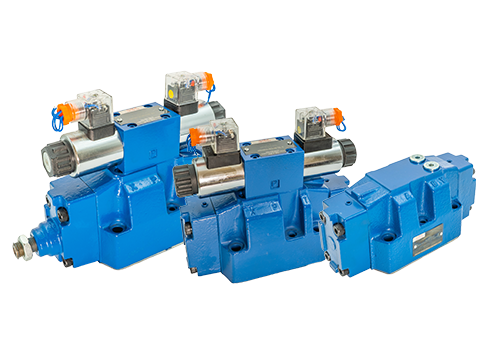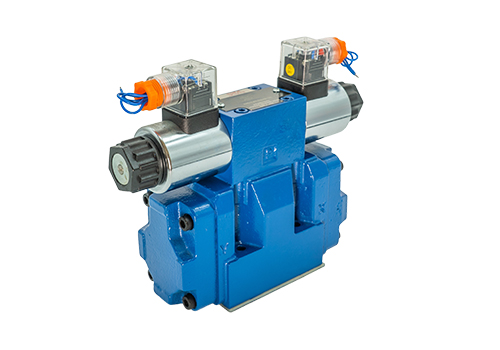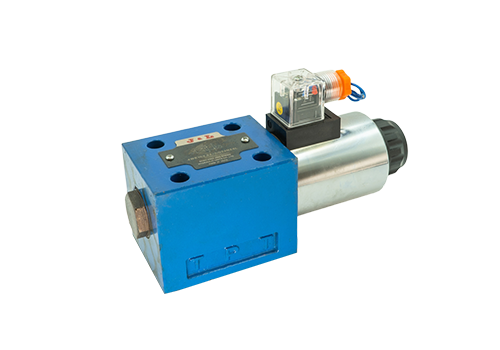
2025-09-20 The superimposed hydraulic control check valve combines the compact structure of the superimposed valve and the reverse flow function of the hydraulic control check valve. It has the characteristics of compact structure, simple installation, high system integration, accurate control, wide application scenarios, and convenient maintenance. The specific content is as follows: compact structure and small size: the superimposed hydraulic control check valve adopts a superimposed design and can be directly superimposed on hydraulic valve blocks or other valves without the need to connect to the pipeline separately. This design significantly reduces the system's volume and weight, making the hydraulic system more compact. Easy installation and short assembly cycle: Since the superimposed hydraulically controlled check valve does not require special installation skills and the components are connected without pipes, the installation process is simple and fast, and the assembly cycle is short. This helps reduce installation costs and improve production efficiency. High system integration and flexible configuration: the superimposed hydraulic control check valve not only has control functions, but also plays the role of oil passage. By adding or decreasing the superimposed valve, the changes in the hydraulic system can be easily achieved, satisfying the different
Read More 
2025-09-18 The function of the 4WEH16 electro-hydraulic reversing valve is to achieve accurate switching of the flow direction of the fluid in the hydraulic system through electromagnetic pilot control, and at the same time support stable operation under high pressure and large flow conditions. It also has a variety of optional functions to meet the needs of complex hydraulic systems. The following is a specific function analysis: Direction control and flow adaptation As a slide valve reversing valve controlled by solenoid valve pilot control, 4WEH16 drives the pilot valve core movement through a solenoid to control the reversing action of the main valve core. Its design can realize the functions of two-position four-way or three-position four-way, and is suitable for hydraulic systems that require frequent switching of fluid directions, such as hydraulic presses, injection molding machines, etc. The reversing action of the main valve core is driven by pilot pressure oil, which can withstand working pressure up to 35MPa and flow rate of 1100L/min, meeting the needs of high-power hydraulic equipment. High precision and stability guarantee adopts spring centering or hydraulic centering structure, and the main valve core can automatically return to the intermediate position when there is no control signal.
Read More 
2025-09-15 The specific maintenance operations of 4WE10 solenoid reversing valve are as follows: Check before installation: Check whether the model and parameters on the solenoid valve sign or label are consistent with the ordering time. If there is any error, please contact the supplier immediately. Read the instruction manual carefully and check whether the actual working conditions on site are within the product range. If the allowable range is exceeded, the installation or use should be stopped immediately and consulted. Installation operation: Before installation, flush the pipe with air or water of ≥0.3MPa, remove impurities in the pipe (such as welding slag, sealing residue, dirt, etc.), and then connect the solenoid valve. Solenoid valves should not be installed in low recesses of the pipeline. If installed in the container discharge pipeline section, the pipeline outlet should be led out slightly above the bottom of the container to avoid impurities deposited at the bottom of the container entering the solenoid valve. Solenoid valves can only be used in one direction and cannot be installed in reverse. There is usually a '→' sign on the valve body to indicate the flow direction of the medium, or the English letter 'IN' means the inlet and 'OUT' means the outlet.
Read More 
2025-09-12 The advantages of 4WE10 single-head solenoid reversing valve include high-precision control, high reliability, compact structure, fast response, energy-saving and power-saving, simple operation, strong pressure resistance, large flow rate, adapt to harsh working conditions, convenient installation and convenient maintenance. The specific analysis is as follows: High-precision control: 4WE10 single-head solenoid reversing valve adopts a precision solenoid valve structure, with a control accuracy of up to 0.2%, which can meet the high-precision industrial control needs and ensure the stable operation of the hydraulic system. High reliability: This valve is made of high-quality materials and has been precision-processed and manufactured, with high reliability and long service life. Its sealing material is made of high-quality rubber, which can ensure long-term sealing performance and reduce leakage risks. Compact structure: The 4WE10 single-head solenoid reversing valve is compact in structure, small in size and light in weight, easy to install and integrate into various hydraulic systems, saving space. Quick response: The electromagnetic control system of this valve can achieve rapid response and can adapt to various
Read More 
2025-09-10 As the core component of modern hydraulic systems, the superimposed relief valve can be analyzed from three dimensions: structural design, functional performance, and application advantages. The specific details are as follows: 1. Structural design: The modular and standardized integrated superimposed valve body is designed as a flat plate structure, with standard oil port connection surfaces (such as cavity holes that comply with ISO 4401 standards) on both sides, and is directly superimposed on the bottom of the direction control valve, the surface of the main oil block or the top surface of another superimposed valve through screws, without additional pipe connections. Advantages: Save space (the installation volume is reduced by more than 60% compared to traditional split valves), simplify the layout of hydraulic circuits, and make the system more compact and tidy. The built-in oily fluid in the oil circuit flows through the casting or drilling channels inside the valve plate to eliminate external pipe connections. Advantages: Reduce leakage caused by pipe fittings and joints (statistics show that pipe fitting leakage accounts for 35% of hydraulic failures), vibration and noise, and improve system reliability. Standardization and universal international standardization
Read More 
2025-09-08 The characteristics of 4WEH16 electro-hydraulic reversing valve are as follows: Structural features: Plate connection: The connection size complies with DIN24340A standard, is standardized and convenient to install. A variety of performances and additional devices are available: Pilot control solenoid valve: available in wet AC or DC solenoids, and can also be selected with or without manual buttons. There are two types of electrical connections: separate and centralized. Main valve reset method: The main valve uses spring-to-neutral neutralization spring to reset or hydraulic neutralization fluid. Other optional devices: with or without reversing time regulator; with or without main valve stroke regulator or main valve spool terminal position indicator; with or without main valve terminal position switch; prepressure valves can be installed in the main valve; plug-in dampers can be installed; pressure reducing valves can be installed when the working pressure exceeds 25MPa, and there are 19 standard functions in total. Working principle features: solenoid valve pilot control: WEH type electro-hydraulic reversing valve is a slide valve type reversing valve that uses solenoid valve as pilot control, used for
Read More 




